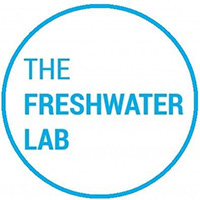The good news is that we are in the Great Lakes watershed that encompasses over 20% of the world’s freshwater. Due to our auspicious location and inheritance of stewardship, Great Lakes people have the chance to survive and thrive amidst accelerated climate change. The secret rests in honoring the water as a generous life giver whose existence we must also preserve.
Great Lakes history includes mass migrations and outpouring of labor power. More recently, the region has been known as the Rust Belt where industry sputtered before the challenge of innovation and segregation turned our cities into battlegrounds. Not even the great waters can dissolve legacies of pollution and trauma. They must be commemorated and healed as we face the future.
Manifesting a blue future in the Great Lakes region requires imagination and adaptation. It also takes coordinated effort across urban, rural and suburban communities. Luckily, a love of the lakes is widely shared and the region has a long history of water-forward binational and bipartisan legislation. The outcomes of recent federal elections have pivoted on Great Lake states.
We can become the world’s Water Belt where genius infrastructure balances problems of flooding and drought as it supports economic growth and widespread stability. Waterfront Superfund sites can become corridors of clean industry and regeneration. The perfect place to begin the transformation is along America’s most engineered waterway: the backward Chicago River.
In order for the Great Lakes watershed to become a climate change oasis, many fundamental systems need to be rebuilt. The overabundance of lead service lines must be traded out immediately. Water must be affordable and accessible for every resident and take priority over subsidizing private enterprise. Infrastructure of water treatment and distribution needs to make the most of every single drop. Vitally, money made from the local water supply must be reinvested in its preservation and advancement.
Like the oasis that it is, the watershed can support the arrival of people and development of new businesses and forms of production. Such trend reversing change from the Rust Belt to the Water Belt portends a stable future, but it cannot occur without some important upgrades.
The necessary upgrades are both technical and social. Because they impact all life in the watershed, the upgrades must be guided by ethics rather than profit motives. We propose three basic principles to guide the transformation: keep water public, keep water clean, and keep water here.


